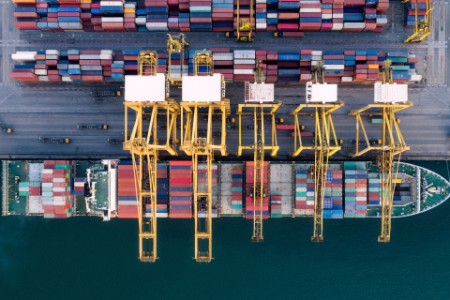How can companies decrease their exposure to disruptive events throughout their supply chain? 6 steps towards a resilient supply chain.
1. Supply chain transparency as the ultimate pre-requisite
Supply chain mapping allows organizations to develop strategies to react to unexpected events. For a supply chain mapping to help companies shield themselves against threats, it should entail as much as possible the entire supply chain network and therefore look beyond Tier1 and 2 suppliers.
The main barrier for achieving this supply chain transparency is the willingness of companies to participate in data sharing. Information sharing within the supply chain network increases the efficiency of a supply chain, as well as its transparency. However, there are risks involved in information sharing within your supply chain network. The main one being (non-)intentional leakages of sensitive data to other partners. Data leakages could have massive implications, ranging from privacy issues, to the loss of your competitive advantage. Therefore, third party regulators are often used to control the risks involved in information sharing within a supply chain network.
2. A risk assessment to benefit from beyond risk mitigation
The identification of all stakeholders of your supply chain network indicates the possible risks to disruptive events. By understanding the different relationships within the network, risk mapping becomes easier. Asking upper tier suppliers to join this process can increase efficiency.
After understanding the nature of the relationships within the supply chain network, an acknowledgement and assessment of risks follows. Through data management, the information flow throughout the entire network can be analyzed. Based on the findings that come from these analyses, targeted optimizations of your network can be executed.
Subsequently, an assessment of the entire network for compliance with all regulations regarding prohibited partners and conflict zones can be made. Non-compliance is heavily penalized and would also lead to serious reputational damage.
Risk management offers benefits beyond risk mitigation of your organization towards disruptions. As mentioned in the first article of this series, leaders can propel their company forward in times of disruption by having a cautious vision on business continuity planning. Through supply chain mapping, leaders can identify where value is added or lost. The entire supply chain network will benefit from a strengthened and more integrated chain.
Risk management tools, with a focus on key commodities and the extended supplier network, can provide insights into the supplier network. The tools make use of enhanced technology and analytics to ensure ongoing screening. Key insights into historical data, as well as prescriptive analytics will support decision making.
The key success factor for a successful permanent risk control is moving from descriptive and predictive analytics to prescriptive analytics.


